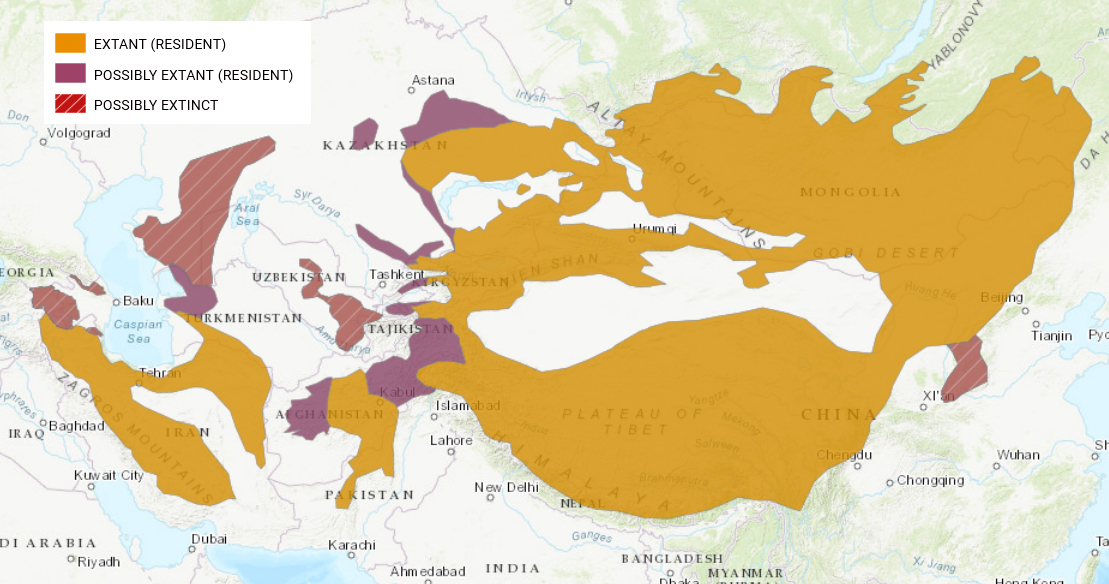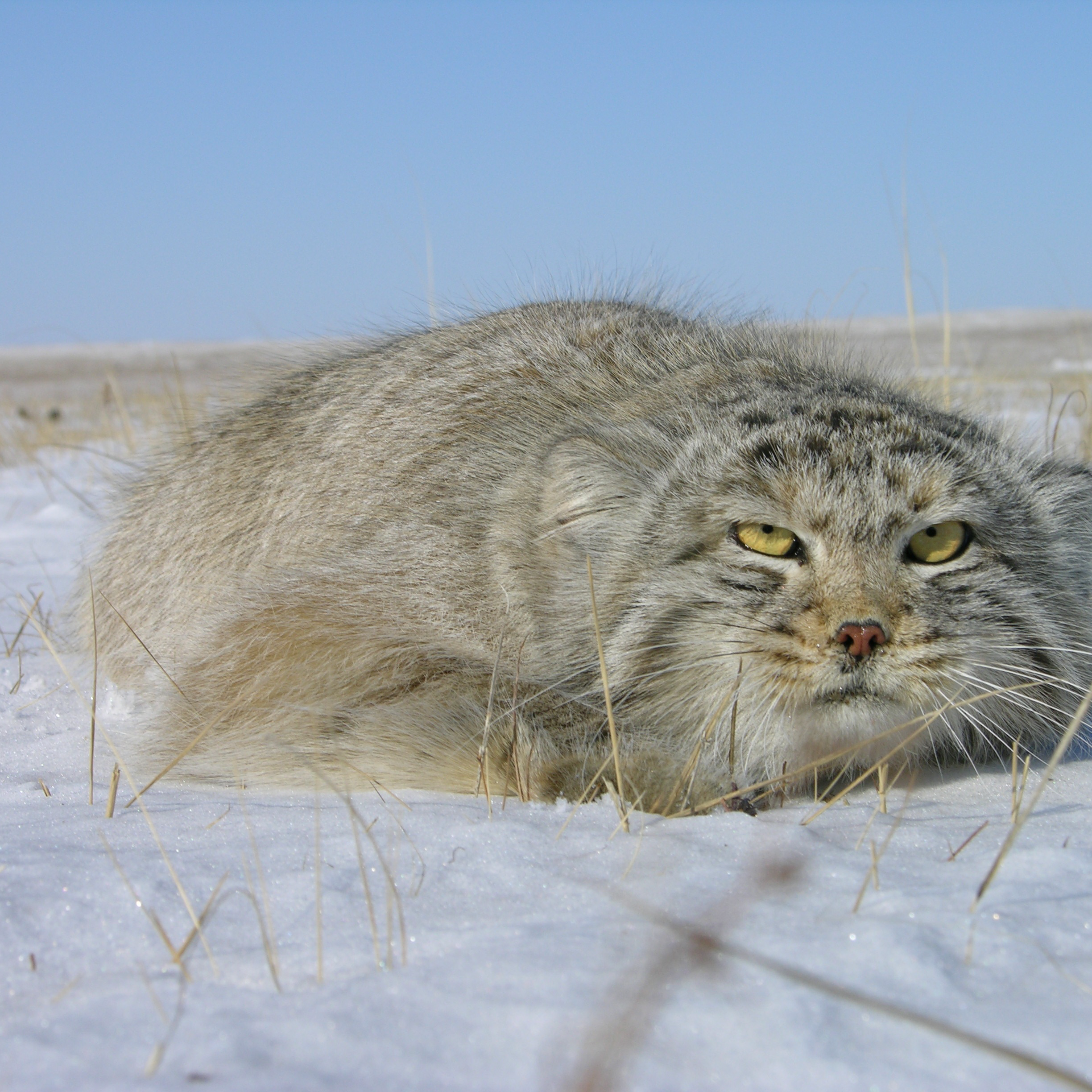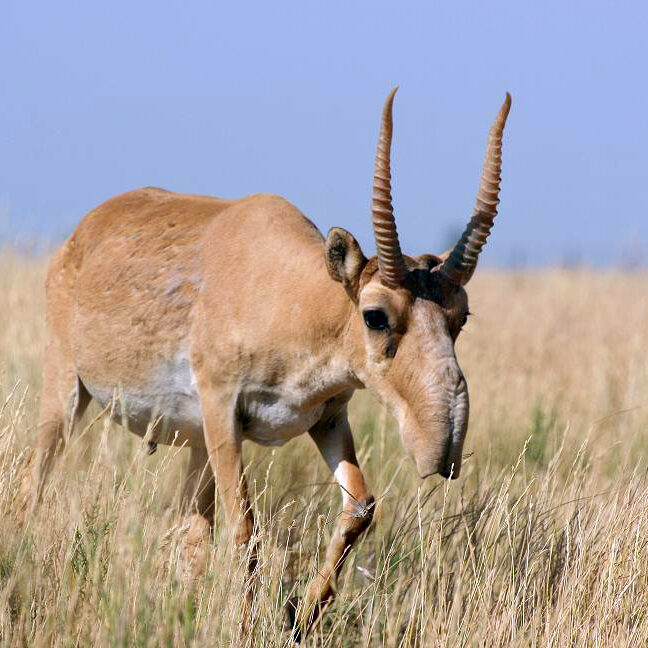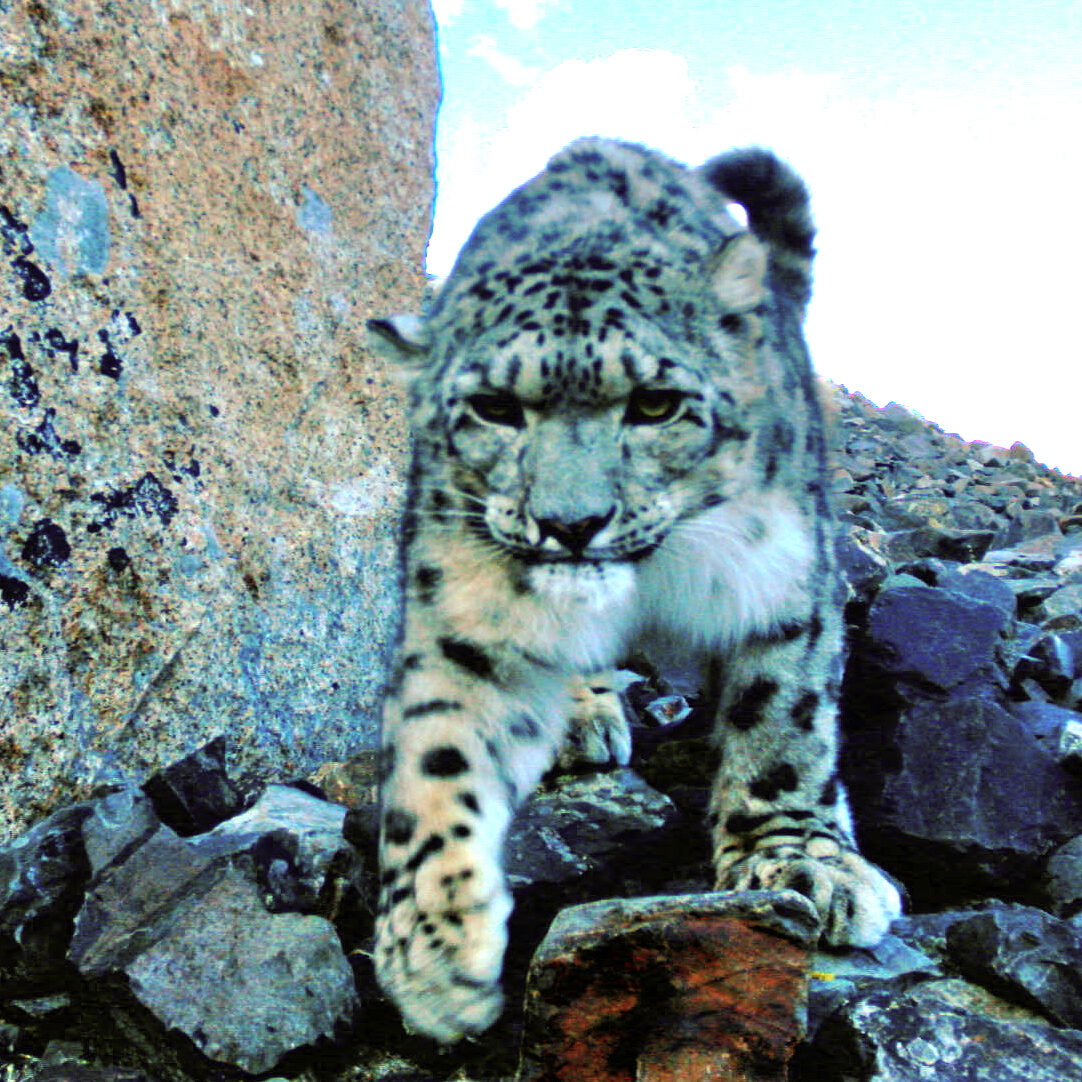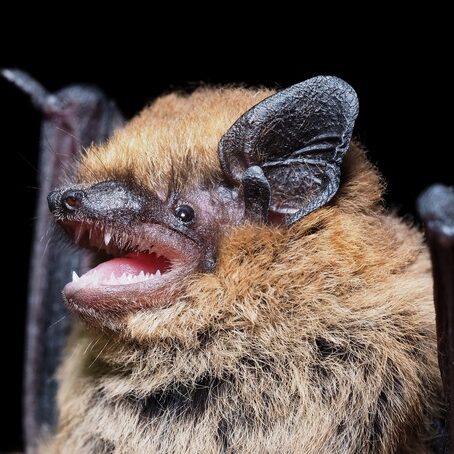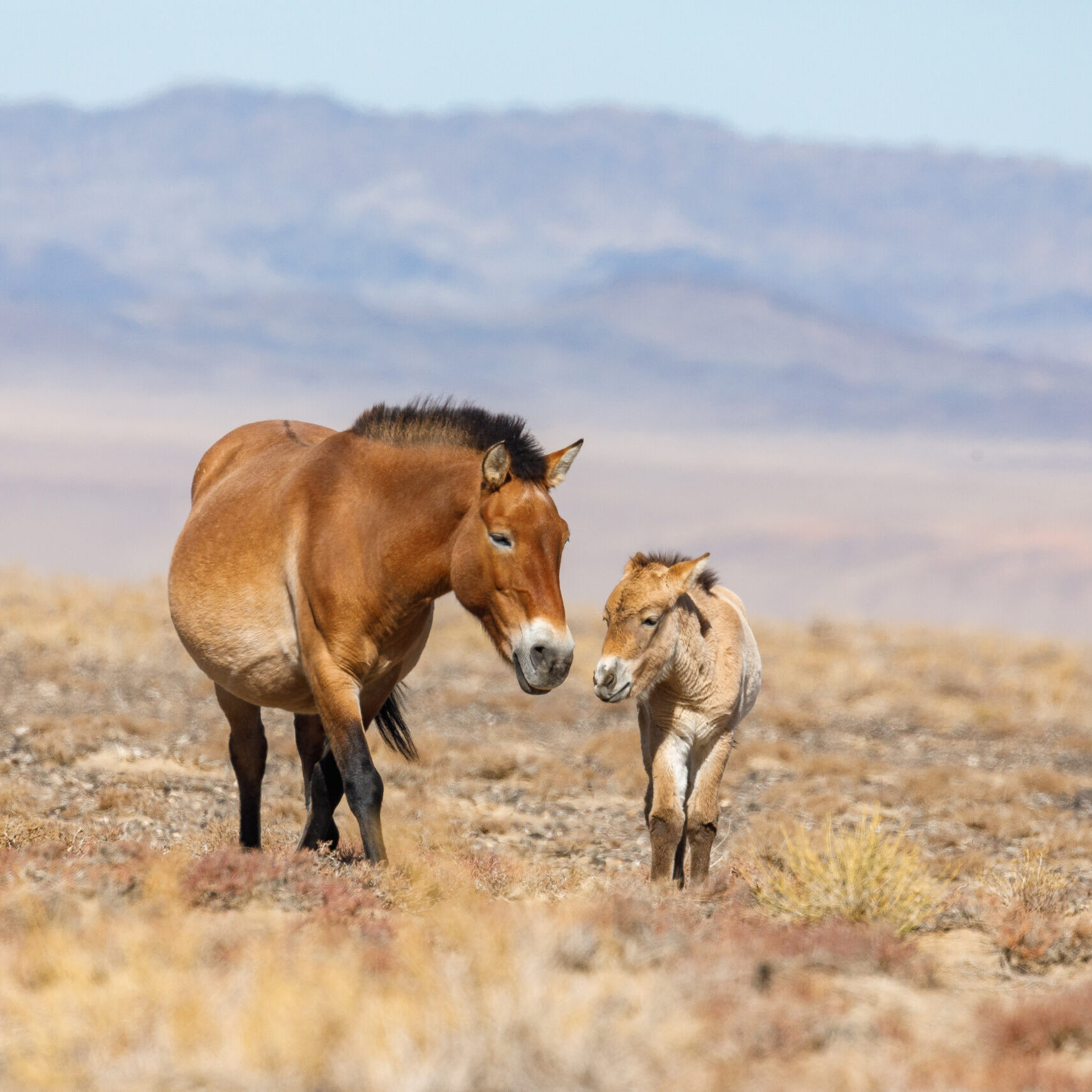Manul Wild Cat
The Manul wild cat is also know as Pallas’s cat, has several notable characteristics: a low-slung stocky body, a flattened and rounded face, and an extremely dense and fluffy coat. The IUCN Red List classifies the Manul as “Least Concern” based on its latest assessment (2019) because of the assumed large global population. Reliable estimates, however, are unavailable due to the Pallas’s Cat widespread, fragmented distribution and difficulties of studying these elusive and solitary cats.
Pallas’s cats are similar in size to domestic cats, with body length ranging from 20-24 inches, an 8-to 10-inch-long tail, and weighing four to 11 pounds. Male cats are much larger than females. Among wild cats, Pallas’s cats have the thickest fur (up to 9000 hairs can grow on one square centimeter of their bodies), making them appear much larger than their true size and enabling them to survive in frigid winter conditions. The feline’s fur is gray in winter, while in summer the cats have more stripes and ochre colors in their fur. The white tips of the Manul’s fur create an illusion that the animal is covered with snow.
The Manul’s round ears, which sit flat on the side of its head, are one of the feline’s most distinguishing features. The low-positioned ears help the cat conceal itself when it is hiding or hunting.
HOW CAN YOU HELP THESE WILD CATS?
To support long-term Pallas’s cat conservation efforts, we are raising funds toward our partner Manul Working Group (MWG) for their Adopt a Camera program.
With your financial support, camera/video traps will be installed in two Pallas’s Cat habitats—central Kazakhstan and Mongolia. MWG will use this technology to expand data collection about the size and health of the Pallas’s Cat’s population, learn more about their behavior, and better understand the threats they face.


